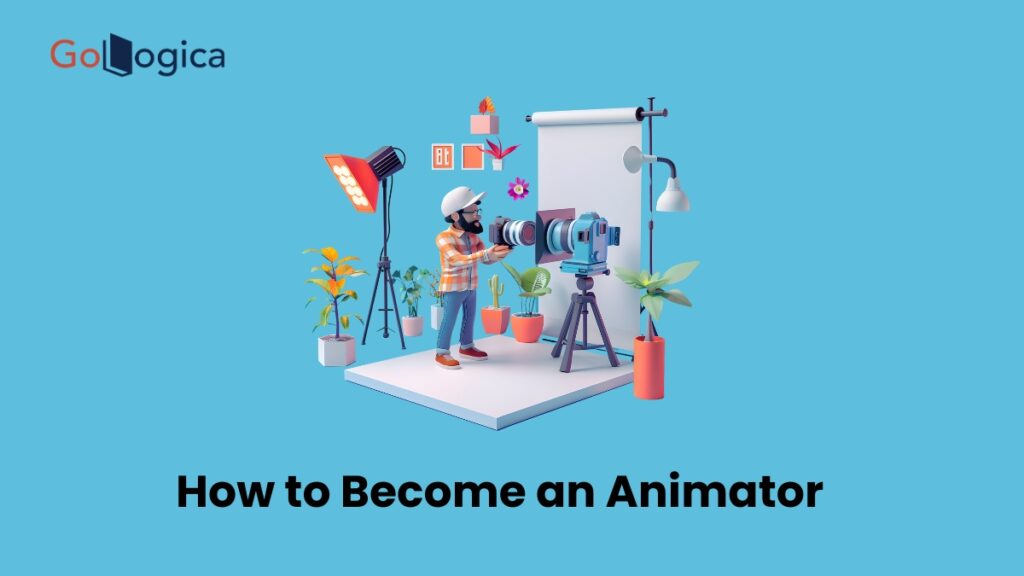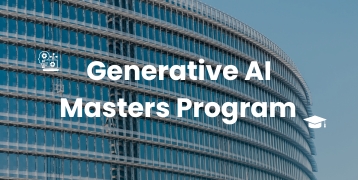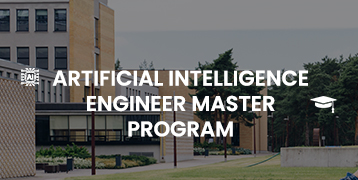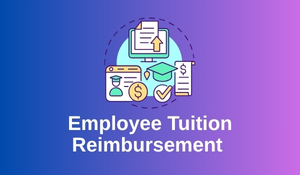
Table of the content
- Introduction
- Education and Training
- Formal Education
- Diploma Courses
- Self-Learning
- Develop Artistic and Technical Skills
- Drawing and Sketching
- Animation Software
- Animation Principles
- Build a Portfolio
- Showcase Your Work
- Portfolio Websites
- Gain Practical Experience
- Internships
- Freelance Work
- Networking
- Stay Updated and Be Flexible
- Industry Trends
- Adaptability
- Conclusion
Introduction
Animation is no longer part of the children character, it is a dynamic, constant development industry that plays an important role in films, TV, video games, advertising, education and digital materials. If you have a living imagination, a love to tell the story, and it is a passion to bring the characters to life, becoming an animator can be the right career path for you. The technology provides a number of opportunities for both creative and technical brains, with technology that is growing rapidly and demand for digital materials at a high level.
Being an animator is just more than drawing skills, this means understanding movement, mastery in animation software and being able to translate ideas into visually attractive materials. Whether you dream of working with large studios like Pixar and dream work or hope for freelance on your premises, there are obvious steps to enter the animation world. This article will guide you through what takes you to create an animator from educational path and skill development to build a strong portfolio and remove your first job. If you are ready to convert your creativity into a full career, read to find out how to make your impression in the exciting animation field.

Education and Training
To become an animator after 10th grade, you can start with a posting in a diploma or certification course in animation. Many institutions offer short -term programs in 2D/3D animation, graphic design or multimedia. These courses focus on the necessary skills such as sketching, storytelling, character development and using animation software such as Adobe EMPT, Blender and Maya. Everything you don’t need a degree to start creativity, passion and dedication. Hand training, project work and internships will help create your portfolio during the course. Online tutorials and workshops are also good ways to practice with new trends and keep up to date. Starting early allows you to gain experience and open career opportunities in animation and media industry.
Formal Education
Formal education plays an important role in creating a strong basis for career in animation. Students can start the journey after completing 10 or 12. Standard by taking recordings in diplomas or degree programs presented by animation institutions or colleges. A diploma in animation, which usually takes 1 to 2 years, is suitable for students after 10. And focuses on 2D and 3D animation, design principles and software tools such as Adobe Amita, Maya and the basics of the blender. After 12, students can choose a bachelor’s degree in animation or art, which provides intensive training in visual history, character design, VFX and digital art. Formal education provides exercises on hands through structured teaching, experienced faculty’s guidance and projects, and helps students to be a business cartoonist.
Diploma Courses
Diploma course in animation There are short -term, skill -focused programs designed to provide practical training in animation and multimedia. These courses are ideal for students who have completed their 10 or 12 standard and want to enter the animation industry quickly.
The course includes 2D and 3D animation, character modeling, storyboarding, visual effects (VFX), graphic design and industry standard software such as Adobe after Effects, Autodesk Maya, Blender and Photoshop Use. These courses focus too much on practical training and project work, and help students to create a strong portfolio.
Diploma courses are introduced by many reputed animation institutions and often include internships, making them a great starting point for aspiring animators.
Self-Learning
Self -learning in animation It is a powerful and flexible way to develop animation skills without formal classes. With a wide range of online resources available today, aspiring animators can start learning right from home. Platforms like YouTube, Coursera, Udemy, and Skill share offer tutorials and courses on 2D/3D animation, character design, motion graphics, and animation software such as Blender, Adobe Animate, and Maya.
Self -learning lets you learn at speed and discover different styles and techniques. Regular practice, to participate in challenges online and work on individual projects helps improve the skills and creativity. Showing in online forums and animation communities can provide feedback and keep you inspired. With dedication and continuity, self -learning can lead to a successful career in animation.
Develop Artistic and Technical Skills
Both artistic and technical talents must be developed in order to become a successful animator. Drawing, sketching, storytelling, colour theory, and character design comprehension are examples of artistic abilities.
They help create visually attractive and expressive animations. Daily practice, studying real life movements and learning from other artists can increase creativity. On the technical side, animators should master the industry standard software such as Adobe Amimate, Blender, Maya and After Effects. Understanding time, speed, and visual effects brings realism to animation. The combination of creativity with software knowledge allows animators to give ideas to life. Either through formal training or self -learning, continuous improvement in both areas is important to stand in the competing animation industry and produce, high -quality professional work.
Drawing and Sketching
The skills required in animation, drawing and sketching and create visual foundations to for creating characters, scenes, and motion. They help the animators translate into clear, expressive scenes and support the development of Storyboards and Keyframes. Through regular practice, artists improve the understanding of anatomy, proportion, perspective and movement, which are important for designing reliable and attractive animations. Rapid sketching also provides the opportunity to detect different positions, manifestations and functions. Whether traditionally or digitally performed, it accelerates skill observation and increases creativity. The mastery in the region allows animators to tell emotions, actions and visually, making it an indispensable part of the animation process.
Animation Software
animation software is a digital program that is designed to create motion graphics, cartoons, and visual effects in which the images or models are manipulated in time. It produces the opportunity for artists and designers to work and build up 2D or 3D animation for entertainment, advertisement, games, or education videos. Several examples of such software are Adobe Animate, Blender, Autodesk Maya, Toon Boom Harmony that contain such features as drawing tool, working with the timeline, rig, and render the figures. Animation software simplifies complicated operations, facilitating the process of animating characters, backgrounds, and effects. Whether for beginners or professionals, it provides creative control to bring ideas to life through motion and storytelling.
Learn the basics of quality assurance with Software Testing Fundamentals Training and build a strong foundation in software testing.
Animation Principles
The essential principles are squash and stretch, making the objects heavier and more flexible by using distortion while moving. Anticipation is animation; the spectator is moved to an expecting eventuality in realism.Staging is the guiding of the views and their attention to the key points in a scene dedicated to developing an apparent story. Additionally, the principles are straight ahead action and pose-to-pose, follow through and overlapping action, slow in and slow out, arcs, secondary action, timing, exaggeration, solid drawing, and appeal. Together, the aforementioned characteristics contribute to enjoyable and vivid animation. These concepts apply to both traditional and digital animation, providing a comprehensive guide for animators looking to create engaging and realistic character animations.
Build a Portfolio
Building a portfolio is key to showing off your skills and getting opportunities in animation or any creative field. A good portfolio showcases your best work and your technical and creative range. For animators this usually starts with a showreel a short, fun video compilation of your top animation clips, usually 1-3 minutes long, that features character animation, motion graphics, visual effects and other styles. Alongside your showreel include individual projects with descriptions of your role, concept development and the animation process. You should show variety, character designs, life drawings, motion graphics etc to show versatility. Many successful portfolios also include technical skills like 3D modeling, rigging and compositing if applicable. Present your work in a clean and organized way either through a personal website or portfolio platforms so navigation is easy for the viewer. Add project breakdowns, stills and even awards or recognitions to make your portfolio more impactful. Ultimately a good portfolio not only shows your artistic talent but also your professionalism and personal brand.
Showcase Your Work
Showcasing your work is key to making an impact as an animator. Open with a showreel, a short video that shows your best work and different styles (character animation and 3D modeling). Organise your work into clear sections, grouping similar pieces so it’s easy to navigate.Prioritise quality over quantity, choose your best work to show your skills and artistic growth. For each project, write a short description of your process and the tools used so viewers can see your storytelling ability. Use high res images so your work pops and keep your portfolio design clean for desktop and mobile. Including personal projects and process sketches will show your unique style and problem solving skills and make your portfolio a true reflection of you as an animator.
Portfolio Websites
Animators need portfolio websites to show off their work and get job opportunities. These sites serve as a central place to display your best creations giving you more control over how you present them than social media does. A good portfolio website should be simple to use, with clear menus and labels for each project.
As you plan your site, think about its layout, colors, and content. The layout should take visitors through your work like a story starting with a title page then an intro, your work, and how to contact you. Pick colors that match your brand and make your animations look good.
Your portfolio should have a showreel, character designs, and storyboard examples. Focus on your best pieces that show what you can do and how versatile you are. For each project, explain what you did, the idea behind it, and how you made it. Keep adding your newest work and career wins to your website to show the best of your animation skills.
Gain practical skills to manage projects efficiently with Oracle Fusion PPM Training, your guide to smarter project planning and execution.
Gain Practical Experience
To get hands-on experience in animation, you need to work on actual projects that boost your abilities and self-assurance. You can kick things off with internships, which teach you how animation studios operate and give you a better grasp of the industry. During internships, you might help with storyboards, create rough drafts, and pitch in on final animations all under the guidance of seasoned pros. Apart from internships, you can join animation clubs, take part in contests, or pick up freelance gigs to hone your craft and grow your portfolio. These real-world experiences not sharpen your technical skills but also help you build important relationships for your future job prospects.
Internships
Internships in animation give students and recent grads a chance to gain real-world experience and make connections in the field. These opportunities let them work with pros at animation studios, gaming companies, and ad agencies. Interns could assist senior animators with tasks such as creating animation assets, character animations, motion graphics, and visual effects.
These internships can run from a few weeks to several months, with some paying and others not. DreamWorks Animation offers paid internships that last 10 weeks and happen three times a year. The work can include creating motion graphics for social media, editing videos, and teaming up on promo content. Interns that are proficient with Adobe Premiere Pro and After Effects are highly sought after by many companies.
Internships not only teach you technical skills, but they also let you experience the atmosphere and way of working at an animation firm. This hands-on experience can serve as an alternative to a four-year degree, as many recruiters value practical know-how. Internships also help you build your portfolio get guidance from seasoned animators, and connect with industry pros.
Freelance work
Freelance animation gives you the chance to be your own boss and choose your working hours. All parts of a project are your responsibility as a freelancer, including idea submission and deadline delivery. It is possible to earn more than what you would in a studio role because you have the freedom to select your projects and set your charges.
Diverse projects help expand your skills and prevent stagnation, which is another benefit of freelancing. Lack of creative control on the other hand means one must accept total responsibility for all aspects of the project which can become stressful without the safety of a paycheck. Failure to succeed means that the animator will require a diverse set of talents and software to make enticing offers to clients in order to earn a reasonable fee.
Regardless of the difficulty, controlling your work and the way you do it is very appealing to many animators.
Networking
Networking is needed to create a successful career in animation by opening doors for different opportunities and collaboration. The network industry is about having real relationships with people. To network effectively, participate in industry events such as conferences, workshops and film festivals to meet professionals and potential customers. Join us on web communities on platforms such as ArtStation, Behance and LinkedIn to get in touch with animators all over the world. Use social media to join artists, studios and industry leaders by sharing your work and participating in discussions. Be active and real whether it is online or offline, and always be respectable and professional. Follow regular contacts to maintain relationships, and collaborate on projects to expand the portfolio and provide networking opportunities. Create a strong online look by creating a website to demonstrate your work
Begin your tech journey with Palo Alto Networks Essentials Training and learn smart, secure solutions for the future.
Stay Updated and Be Flexible
Keeping updating and flexible is essential for a thriving animation creation career because the field constantly evolves. Animation tools and techniques changes quickly, to remain competitive requires continuous learning. Adaptability is important, whether mastering new software, learning different animation styles or adjusting project requirements.
To live in the present, follow industry trends through blogs, forums and social media. To improve your skills, link to continuous learning through online courses and workshops. Used with new devices to expand your creative palette. Stay open to the response to colleagues to improve your work. Develop different skills, including traditional and digital animation to increase your versatility.
Changes and continuous learning make you ensure that you remain relevant and optimal in the animation industry
Industry Trends
Animation always changes! Right now, popular trends include a mix of 2D and 3D styles to achieve both the world’s best. Virtual Reality (VR) animation becomes more advanced, causing new experiences, and the improved reality (AR) combines digital and real content. Artificial Intelligence (AI) helps the animators by automating the features, increasing the process. The studios also focus on environmentally friendly methods to reduce their impact on the environment. To use animation to imagine personal animation and data also gain popularity
Adaptability
It is very important to be able to meet new conditions, equipment and challenges in animation. As technology and trends change, it is useful to stay flexible and open new skills or try different techniques. This quality allows you to handle a wide selection of projects, meet customer needs and solve the problems creatively. This also means that you can accept the response, do good work with others and continue to improve your work. By being open -sighted and ready to change, you can grow and succeed in the rapidly growing animation world.
Conclusion
Finally, becoming an animator is a journey that mixes creativity, technical skills and continuous learning. From a strong educational foundation, whether you are through a degree, diploma or certification, you need to develop both artistic and software skills, build an impressive portfolio and gain practical experience through internship or freelance work. Living with network and industry trends are also important steps to ensure long-term success in this sometimes developed field. When you prepare for the interview and demonstrate your work, remember that firmness and adaptability are important. A GoLogica can support your ambitions by offering special courses, hand-on-training and career guidance, which can help you master the latest animation tools and techniques for a successful career in animation.










